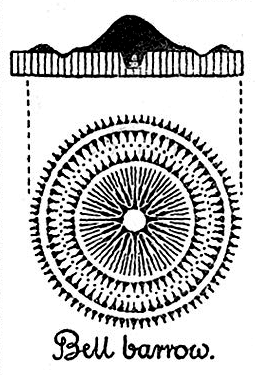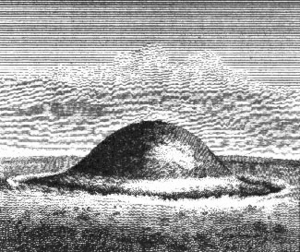Bell barrow facts for kids
A bell barrow is a special type of ancient burial mound. It was first identified by historians John Aubrey and William Stukeley. You might also hear it called a Wessex type barrow or a campanulate form barrow. These mounds are like big, circular hills built long ago to cover burials.
What Are Bell Barrows?
In the United Kingdom, bell barrows usually look like one or more round mounds. These mounds are surrounded by a circular ditch. A flat area, called a berm, separates the mound from the ditch. Sometimes, there's an extra bank of earth outside the ditch too.
The ditch around the barrow is very important. It's called a "quarry-ditch" because the earth dug out from it was used to build the mound itself.
What Was Found Inside?
Underneath the mound, there is usually a burial pit. This pit often holds the remains of people from ancient times. Sometimes, the bodies were simply buried. Other times, they were cremated, meaning they were burned.
Along with the human remains, archaeologists often find "grave goods." These are items placed with the person who was buried. Common grave goods include things like daggers or pottery vessels. For example, at a bell barrow in Sutton Veny, archaeologists found a wooden coffin from the Bronze Age. However, not every bell barrow has a burial. The one in Milton Lilbourne, Wiltshire, for instance, did not have any human remains.
Most bell barrows found in the United Kingdom date back to the early Bronze Age. This was a time when people started using bronze to make tools and weapons.
Different Kinds of Bell Barrows
An archaeologist named Leslie Grinsell created a way to classify, or group, different types of bell barrows. This helps researchers study them better:
- Type Ia: This is a single mound with a narrow berm (the flat area).
- Type Ib: This type has a single mound with a normal-sized berm.
- Type Ic: Here, you'll find a single mound with a wide berm.
- Type II: This type has two mounds.
- Type III: This type has three mounds.
- Type IV: This type has four mounds.
See also
 In Spanish: Túmulo en campana para niños
In Spanish: Túmulo en campana para niños



